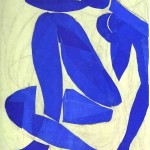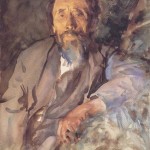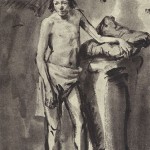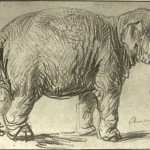Posts Tagged ‘Rembrandt’

The essence of an object
August 26, 2013
Above: Henri Matisse “Blue Nude”, gouache and collage, 1952 Here is a phrase that I often come across: “Convey the essence of the object (or figure, landscape, etc.)”. These words are repeated in books, art classes and demonstrations. Is this just meaningless “art-speak”? I have been wondering… What on earth is an object’s essence, and how […]
2013 | Blog | Tags: essence of object, Matisse, RembrandtComments (1)

Perspective and emotion: Spaces between people
April 25, 2013
As artists we focus on ideas and emotions, so why should we bother with perspective? Above: Rembrandt “The Supper at Emmaus”, 1629, oil on panel. Art ideas are full of contradictions. Here is one example that fascinates me: Art itself is primarily about emotional concepts, yet artists are expected to master the technical challenges of perspective. With its ruled lines, vanishing points and […]
2013 | Blog | Tags: blog, figures, perspective, Picasso, Rembrandt, spaces between people, Van GoghComments (2)

Portrait drawing: how high is the collar?
October 20, 2012
Some thoughts on necklines in portrait drawing Above: Picasso “Boy with a Pipe” 1905 The importance of positioning the collar correctly In our draped model class last week, we looked closely at necklines. Where does the collar cross the back of the model’s neck? How high up does the collar sit? It is very important to judge this […]
2012 | Blog | Tags: blog, portraits, Rembrandt

Lighting the artist’s model…human or equestrian
October 11, 2012
Starting to think about tone, value and mood Above: Edward Hopper “Seated Male Nude” 1923-4 A tonal approach to life drawing Going back and forth to repeated life drawing sessions, it is easy for artists to run out of ideas and inspiration. Why not just stay at home and work from photos (we have no […]
2012 | Blog, Equestrian Life Drawing, Life drawing | Tags: charcoal, equestrian life drawing, Hopper, life drawing, lighting, Rembrandt, tonal drawingComments (1)

Edges: last Friday’s class and, in particular, some thoughts on combining edges and cross contour lines
May 2, 2012
Last Friday’s “What to do about edges” class It turns out that there is no single best approach for drawing edges, rather many possible ways of working. In the class, each artist took a picture by a “great master”, from Leonardo da Vinci to Henry Moore, discussed how edges had been tackled in that […]